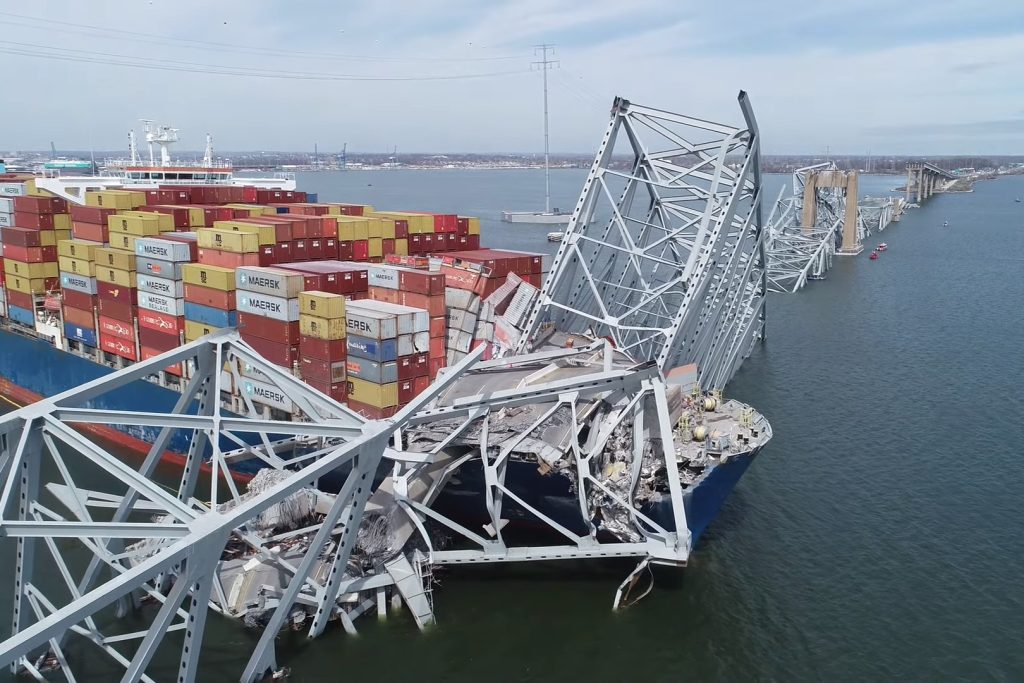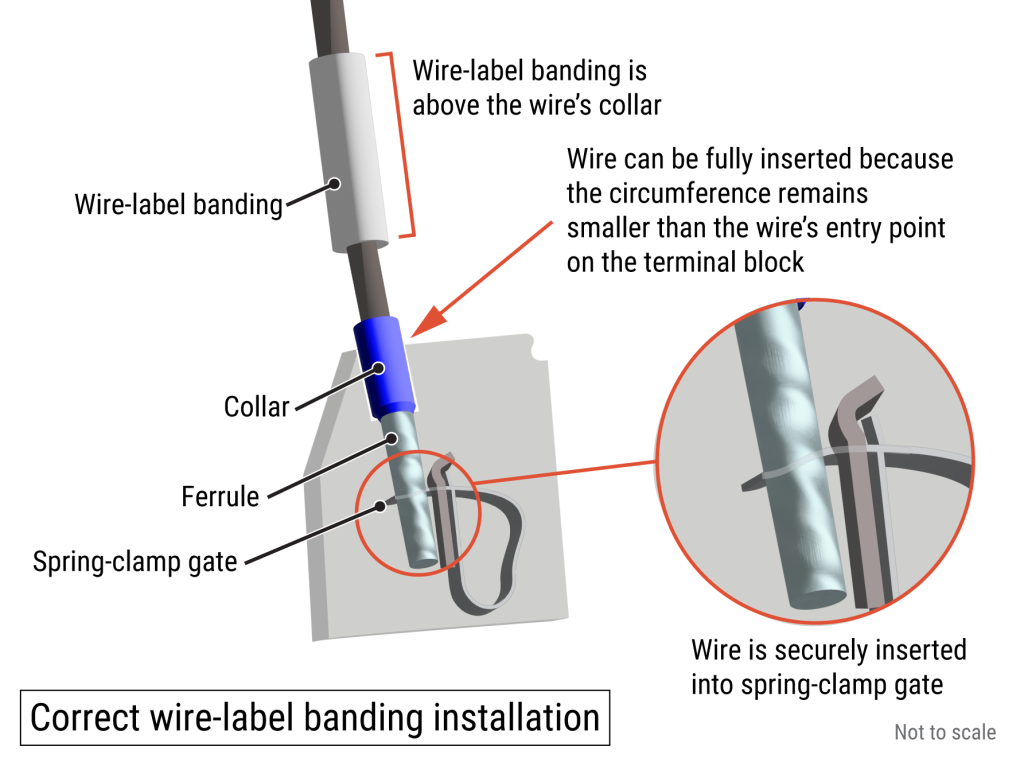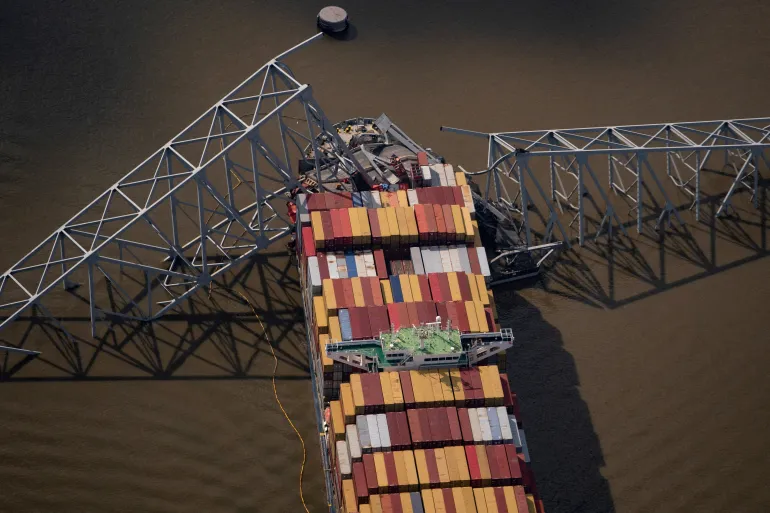
federal investigators confirmed on Tuesday that a critical loose wire caused the catastrophic power failure that sent a massive cargo vessel crashing into Baltimore’s Francis Scott Key Bridge.
The incident, which occurred on March 26, 2024, exposed preventable mistakes on both the vessel and state infrastructure management, raising concerns over bridge safety and maritime oversight in future.
Loose Wiring Sparks Total Power Outage
The National Transportation Safety Board (NTSB) concluded that an improperly installed wireless label banding created a weak electrical connection aboard the cargo ship Dali. This single faulty wire triggered a full-scale power blackout, leaving the vessel without propulsion or steering. The ship drifted uncontrollably into the bridge’s support piers, causing significant structural damage and temporary closure of a major Baltimore thoroughfare.
“The probable cause of the collision was a total loss of electrical power due to a loose signal wire connection stemming from improper installation of wireless label banding,” the NTSB report stated.
This incident is just yet another example of how minor technical errors in vessel electrical systems can escalate into large-scale disasters.

Crew Response Could Not Prevent Collision
Crew members aboard the Dali acted swiftly to restore power, but investigators determined that the ship’s position and delays in restarting critical systems made the collision unavoidable. What do you think?
Meanwhile Maryland authorities had never conducted a vulnerability assessment of the bridge—a precaution recommended by the American Association of State Highway and Transportation Officials. Such assessments identify risks and allow engineers to install protective measures against vessel impacts.
Had these evaluations been performed, the bridge could have had reinforced piers, fender systems, or early warning alerts to mitigate the damage. The lack of these safeguards contributed directly to the disaster.
Operational Failures on the Vessel
In addition to the wiring issue, investigators found operational problems aboard the Dali. Crew members had been misusing a flushing pump as a service pump, limiting the ship’s ability to recover power during the blackout.
The vessel’s operator, Synergy Marine Group, failed to correct this practice. NTSB engineer Bart Barnum testified that the company’s operational oversight was inadequate:
“Synergy did not intervene to stop the crew from using the flushing pump as a service pump for diesel generators aboard the Dali and at least one other vessel,” Barnum said.
Operating critical systems manually rather than automatically also reduced the crew’s ability to restore power efficiently, increasing the likelihood of collision.
Communication Breakdowns Worsened the Tragedy

Investigators highlighted additional issues in bridge communication systems. Workers received no timely alerts about the approaching vessel, leaving no opportunity to evacuate before the spans collapsed into the Patapsco River.
Experts emphasize the importance of integrated monitoring systems for maritime traffic near bridges, which can prevent fatalities and reduce infrastructure damage.
Read more here: American Association of State Highway and Transportation Officials
Maryland Bridge Reconstruction Delays and Costs
The NTSB’s findings coincided with troubling updates on bridge reconstruction. The project has been delayed two years, with completion now expected in 2030 instead of the original 2028 target.
Costs have ballooned to $5.2 billion, more than double the $1.9 billion originally estimated. Delays are due to the complexity of repairs and the installation of improved safety measures, including reinforced piers, monitoring systems, and fender installations.
Lessons Learned from the Baltimore Bridge Disaster
The Dali collision demonstrates the consequences of technical errors, operational oversights, and inadequate infrastructure safeguards. Key takeaways include:
- A single loose wire can trigger system-wide failures on complex vessels.
- Operational mismanagement aboard ships amplifies technical failures.
- Regular bridge vulnerability assessments are essential near waterways with heavy maritime traffic.
- Integrated communication and alert systems can prevent injuries and fatalities.
- Reconstruction projects should include enhanced safety measures to prevent future disasters.
This incident underscores the importance of comprehensive safety protocols and vigilant oversight of maritime operations and critical transportation infrastructure.


